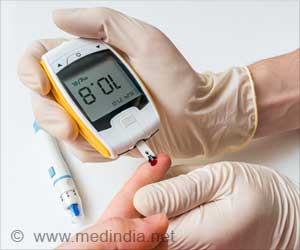.
However, effervescent and soluble formulations of 0.5 g tablets of paracetamol can contain 0.44 and 0.39 g of sodium respectively.
If a person took the maximum daily dose of two 0.5 g tablets every six hours, they would consume 3.5 and 3.1 g of sodium respectively – a dose that exceeds the total daily intake of 2 g a day recommended by the World Health Organization.
Other formulations exist that contain an extremely small amount of sodium or none at all.
Too much salt in diets is known to be a major public health problem and is associated with an increased risk of heart disease and death among patients with high blood pressure.
However, there is inconsistent evidence of similar risk for people with normal blood pressure and it would be unethical to conduct a randomized controlled trial to look at this.
Researchers from Xiangya Hospital, Central South University, Changsha, China, analyzed data from the UK’s Health Improvement Network, which is an electronic medical database of GPs records for approximately 17 million people.
They looked at 4,532 patients with high blood pressure who had been prescribed sodium-containing paracetamol and compared them with 146,866 patients with high blood pressure who had been prescribed paracetamol without sodium.
They also compared 5,351 patients without high blood pressure who were prescribed sodium-containing paracetamol with 141,948 patients without high blood pressure prescribed non-sodium-containing paracetamol. The patients were aged 60-90 years and the researchers followed them up for a year.
They found the risk of heart attack, stroke or heart failure after one year for patients with high blood pressure taking sodium-containing paracetamol was 5.6% (122 cases of CVD), while it was 4.6% (3051 CVD cases) among those taking non-sodium-containing paracetamol.
The risk of death was also higher; the one-year risk was 7.6% (404 deaths) and 6.1% (5,510 deaths), respectively. There was a similar increased risk among patients without high blood pressure.
Among those taking sodium-containing paracetamol, the one-year heart disease risk was 4.4% (105 cases of CVD) and 3.7% among those taking non-sodium-containing paracetamol. The risk of dying was 7.3% (517 deaths) and 5.9% (5,190 deaths), respectively.
Sodium is used widely in drug preparations for enhancing solubility and disintegration. In 2018, 170 people per 10,000 of the population in the UK were using sodium-containing medications, with a higher proportion among women.
“Given that the pain relief effect of non-sodium-containing paracetamol is similar to that of sodium-containing paracetamol, clinicians may prescribe non-sodium-containing paracetamol to their patients to minimize the risk of cardiovascular disease and death. People should pay attention not only to salt intake in their food but also not overlook hidden salt intake from the medication in their cabinet,” said Professor Chao Zeng from Xiangya Hospital, Central South University, Changsha, China.
Although the US Food and Drug Administration requires that all over-the-counter medications should label the sodium content, no warning has been issued about the potentially detrimental effect of sodium-containing paracetamol on the risks of hypertension, cardiovascular disease, and death.
This study results suggest re-visiting the safety profile of effervescent and soluble paracetamol.
Strengths of the study include its large size and the fact the researchers looked at people with and without a diagnosis of high blood pressure.
Limitations include the fact that this is an observational study and can show only that there is an association between salt in paracetamol and CVD and deaths, rather than that salt causes these events.
There was a lack of data on dietary intake of salt and excretion of salt from urinary samples; the researchers took account of factors that could affect the results, but some may not have been accounted for, such as genetic traits; the use of over-the-counter paracetamol was not recorded.
However, by restricting the study to those over 60 who qualify for free prescriptions in the UK, the risk of this is minimized; patients may not have adhered to the medication prescribed by their doctors.
Source: Medindia



